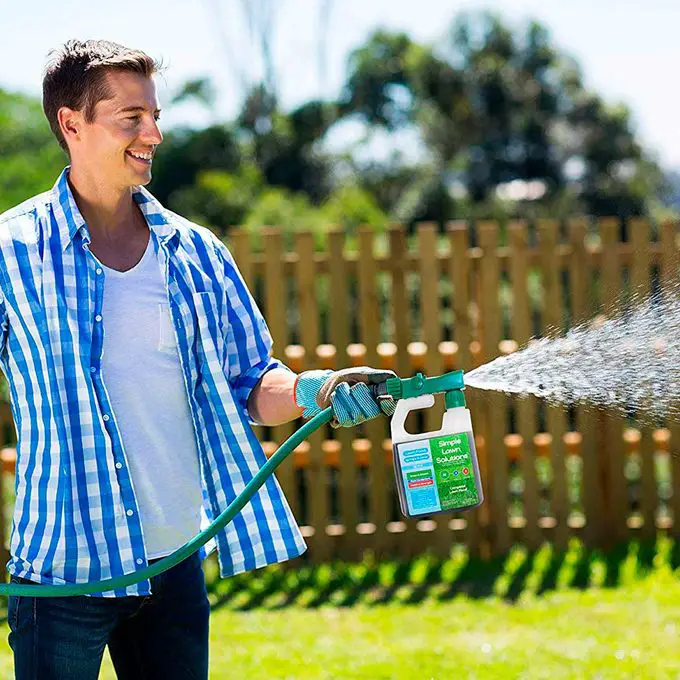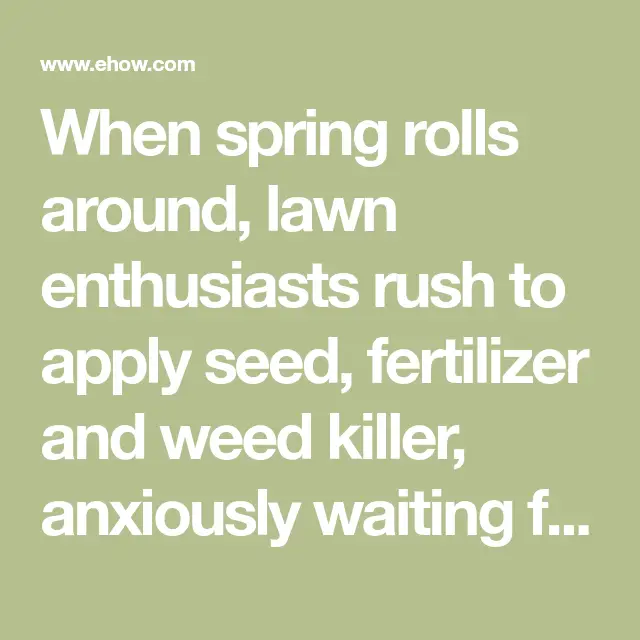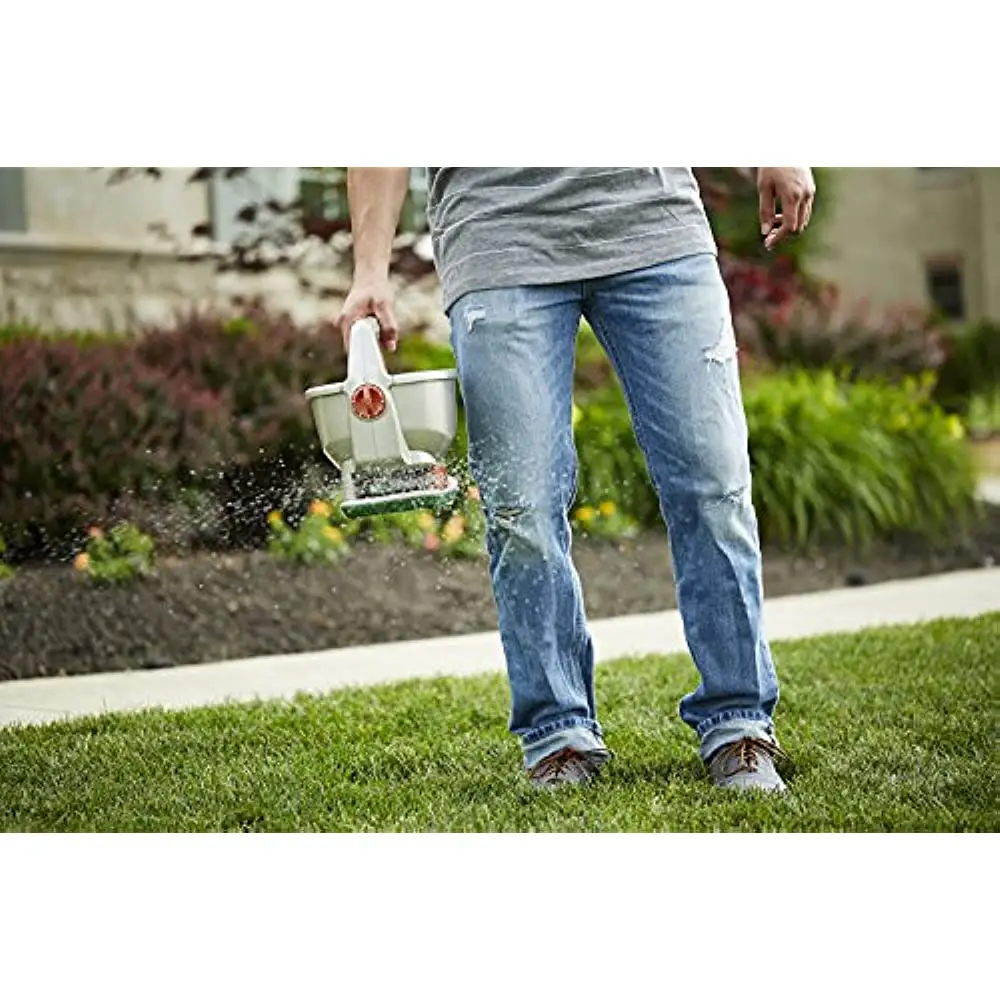When Should I Apply Fertilizer To My Lawn
When your grass is starting to green up and begin to actively grow around the time your lawn first begins to show signs of greenness, apply early spring lawn fertilization once between february and april. Fertilizes the soil to help it retain moisture and prevent weeds from growing.
It also helps to prevent erosion, which can lead to soil erosion and damage to your property. Foliar sprays can also help to keep weeds away from your plants, and they can be used to control aphids and other insects that can damage your crops.
Should I Water Lawn After Fertilizing
At Master Lawn, we typically say to wait 24 hours before watering your lawn after fertilizing. But it is important to make sure that it does receive a good watering session soon after that 24 hour waiting period. Watering helps the fertilizer to activate and to break down and begin feeding nutrients to the lawn.
Also Check: Do It Yourself Lawn Care Steps
Can You Apply A Starter Fertilizer To Grass Seed And Sod
Yes, both seed and sod, states Peter Landschoot, Ph.D., professor of turfgrass science at Penn State Extension.
Seed: At the seedling stage, Grasses need greater amounts of nitrogen and phosphorus than mature grass plants because seedlings are producing new tissues rapidly and thus have higher energy and nutrition requirements. Overseeding a lawn will take more time, but sod will be more expensive.
Sod: Even though sod is mostly composed of mature turf, many of the roots have been severed during the harvesting operation, Landschoot says. Some nitrogen and phosphorus applied to the soil before the sod is laid should help hasten the development of new roots.
You May Like: How To Get Rid Of Unwanted Grasses In Your Lawn
Fill And Prepare A Lawn Spreader
- Next, check the instructions on your fertilizer bag for the recommended setting to use on your lawn spreader. This determines the amount of fertilizer that will be distributed. The higher the setting, the larger the hole size in the hopper, and thus, the more fertilizer spread on the lawn. Adjust the setting on the spreader accordingly.
- Before you fill the spreader with fertilizer, make sure the hopper hole is closed. Fill the hopper on a hard surface, such as a driveway or sidewalk. This will prevent a potential spill from damaging or saturating a spot on your lawn.
- Be careful not to overfill the spreader’s hopper or the lawn spreader may become hard to maneuver. Your lawn spreader may come with an edging feature to help you avoid dispensing fertilizer onto your driveway, sidewalk or walkway. If so, turn it on before you begin fertilizing that area. Follow all other instructions provided by your manufacturer for operating your lawn spreader.
Where And When Should Fertiliser Not Be Used

You should not use fertiliser meant for use in the spring in the autumn or winter months spring fertilisers encourage plant growth which is not needed in the winter months where the harsher temperatures and weather conditions can damage any new plants. Always make sure you are using the right sort of feed for the time of year. There is also no real need to apply fertiliser to frozen ground or very dry ground as it will not be absorbed properly. When applying fertiliser you should be careful to not allow fertiliser to enter water sources like rivers or lakes as this can be harmful.
Products
- The Lawn Store & COVID-19 safety
- How to choose from our range of top soils
- How to water an established lawn
- A closer look at our Top-soil, Turf and Lawn Dressings
- How to sow a new lawn from seed
Shopping
Also Check: How Much Is Insurance For Lawn Mowing Business
Youve Watered After Fertilizing Now What
After this initial watering, avoid watering your lawn for a couple days so the nutrients can settle in. Then, return to your regular lawn-watering schedule, and remember these tips:
- Dont water every day. Water deeply and infrequently. Water too often, and it encourages shallow, needy roots. Water less often but deeply, and roots will grow deeper and healthier and be happy with less water. Grass needs about an inch of water each week.
- Early morning is the best time to water. Its still cool, so all that valuable water wont evaporate in the hot sun. Wrap up your watering as close to sunrise as possible. If sunrise is at 6 a.m., you should be done watering at 6.
Clean The Spreader And Water The Lawn
- After youve covered the lawn, check for any fertilizer that may have scattered onto your driveway, sidewalk or walkway. Use a broom and dust pan to clean these areas. Fertilizers contain minerals that can stain concrete. You can sprinkle any small amounts of leftover fertilizer back onto the lawn after you have scooped it up.
- Put the lawn spreader on the lawn and rinse it off with a garden hose. This allows you to make use of fertilizer thats stuck in and around the spreader. Clean the hopper plate and wheels thoroughly. Allow the lawn spreader to dry before storing it.
- Water the lawn thoroughly with a lawn sprinkler. This will mix the nutrients from the fertilizer into the soil.
You May Like: What Size Spark Plug For Troy Bilt Lawn Mower
Not All Lawn Fertilizers Are The Same
If youve shopped for lawn fertilizer before, you might have noticed some numbers on the label that look something like this: 32-0-4. Its easy to ignore, but dontthis code says a lot. The numbers stand for nitrogen, phosphorus, and potassium , and they tell you the percentage of those ingredients in the product by weight.
Heres how those letters and numbers add up for the look of your lawn.
Recommended Reading: How Much Topsoil For Lawn
Late Summer To Late Fall
Between August and November, grass slows down and prepares for the winter months. At the same time, broadleaf weeds start active growth again. With Pennington UltraGreen Winterizer Plus Weed & Feed Fertilizer 22-0-14, you can feed your northern or southern lawn nutrients essential to its winter prep and spring green-up and kill broadleaf weeds. As a general rule, allow six to eight weeks between fertilizing and your first expected frost.
As with all fertilizer products, check the label and follow instructions for your specific grass type. If you’re overseeding, wait until next year for weed & feed. Instead, turn to Pennington UltraGreen Lawn Fertilizer 30-0-4 for the year’s final feeding.
Always sweep excess fertilizer off sidewalks and patios to avoid runoff.
You May Like: What Is The Best Cordless Lawn Mower To Buy
Begin The Fertilizing Cycle Again
When you buy fertilizer, take note of how long the feed lasts. There are slow- and quick-release fertilizers and these differ in how long they take effect for. Slow-release fertilizers tend to be effective for three to four months quick-release ones last for a month or so. So, make a note in your diary of when to begin the process again.
Can I Apply Fertilizer To Wet Grass
It is possible to applyfertilizer to wet grass and improve its effectiveness. If the grass is not waterlogged and you are using liquid or granular fertilizers that are meant to be washed away, thats okay. Foliar fertilization should not be applied to wet lawns. Fertilizers should not be used on grass that has been mowed.
If you mow your lawn regularly, then you should be able to use fertilizer on your grass. However, if you have a lawn that is mowing less than once a week, it is best to avoid fertilizing that lawn.
You May Like: What Should I Fertilize My Lawn With
Is There A Standard Amount Of Starter Fertilizer I Should Use
If you didnt get a soil test to determine how much starter fertilizer to use for your lawn, Landschoot offers these general recommendations:
- Starter fertilizers should be applied at 0.5 to 1 lb. nitrogen per 1,000 square feet. Amounts in excess of 1.5 lb. nitrogen per 1,000 square feet can burn the young turf and result in poor establishment.
Quick-release nitrogen will speed up seedling development.
Pro Tip: Landschoot notes, Application of a starter fertilizer is not a substitute for the phosphate and potash recommended on your soil test report.
Can You Fertilize Your Lawn Too Much

Its very easy to fertilize your lawn too much. Fertilizing your lawn with too much fertilizer in one application or not allowing enough time between applications, leads to three problems.
As long as you follow the instructions found on the packaging of the fertilizer, the three problems above can be easily avoided.
You May Like: How To Stop Weeds From Growing In Lawn
Can You Use Too Much Lawn Fertilizer
You can use too much fertilizer, which is why using a spreader and following the manufacturer’s instructions carefully are both good options. And yes, using too much fertilizer can harm your lawn, leaving the individual blades of grass scorched.
‘Avoid overdoing the fertilizer as you will produce soft weak growth which will just grow too long too quickly,’ comments David Truby. ‘Make sure there is an even coverage as this will ensure the uniformity of color across the entire lawn. To do this, you should use a spreader designed specifically for this purpose and apply the required amount in two halves to help get a more even coverage across your lawn.’
Understand Fertilizer And Its Role As Plant Food
Before spreading the fertilizer on your lawn, its important to understand what youre doing. The reason why its essential is because not all fertilizer is the same.
This is why its not a good idea to just pick out the cheapest bag in the store or get something that fits your budget. If you do this, you may end up with fertilizer that doesnt help your garden grow. The problem with this is that you wont know what went wrong.
So, to start from the beginning, plants need certain factors to grow. These include sunlight, water, soil and fertilizer. Technically, fertilizer is just a booster. It basically contains a bit more of the nutrients found in soil.
So what are these elements? The most important are nitrogen, phosphorus and potassium. Youll see these elements in your fertilizer bags labeled as N, P and K. In addition, there are other elements included in smaller amounts. But, the three are the main ingredients.
The reason these three are the most important is that plants need a lot of them to grow. Your task is to figure out the composition and balance of these nutrients thats ideal for your lawn.
Read Also: Who Has The Best Riding Lawn Mower
Benefits Of Fertilizing Your Lawn
You might wonder why you need to fertilize your lawn. After all, youre already watering and mowing it regularly to promote healthy growth. However, an unfertilized lawn must rely solely on the nutrients currently present in your soil. This can vary greatly between lawns even in similar climates or soil types. Soil nutrients may have been lost when your home was built or due to improper lawn care from a previous owner.
Properly fertilizing your lawn not only helps your grass to grow more evenly and efficiently but also helps reduce the appearance of weeds in your grass. Developing a fertilizer application plan for your lawn leads to grass with rich, green coloring and dense coverage across your yard.
What Happens If It Rains After You Fertilize Your Lawn
Water can helpfertilizer fully absorb into the soil. However, if you have a lot of fertilizer in your soil, you may want to consider adding a small amount of water to your fertilizer. This will help the fertilizer absorb more of the water, which will make it easier for the plant to absorb the nutrients.
You can also add a little bit of compost to the mix to help with the absorption of nitrogen and phosphorous, as well as some organic matter to aid in the uptake of potassium, magnesium, calcium, and manganese.
Read Also: What Oil Is Best For Lawn Mowers
When To Apply Liquid Lawn Fertilizer
When you should apply the liquid fertilizer on your lawn depends on which product youre using. Make sure you read the instructions on the bottle as each product is either designed for spring and summer or year-round application. That said, liquid fertilizers are generally applied in spring to help your lawn absorb all the nutrients.
Some of the products we recommended are specifically for spring and summer. The first application is given in spring with subsequent small doses applied every few weeks until early summer.
Note, if youre applying chemical liquid nitrogen fertilizer in the peak of the summer season, it may burn your lawn. It would be safer to use an organic liquid fertilizer early in the morning during the summer months so as to avoid damaging the grass. On a final note, make sure the ground is moist when fertilizing your lawn for optimal effect.
Also Check: Changing Oil In Craftsman Lawn Mower
When To Fertilize A Lawn
When your lawn is looking a little shabby, you may be tempted to throw some fertilizer on it. But when, how, and at what time you fertilize your lawn requires some careful consideration.
The best time of day to fertilize a lawn is morning because that’s when the temperature is cooler and the grass is moist with dew. Heat and dryness are your enemies when fertilizing your lawn. Even without hot temperatures, applying chemical fertilizers to grass exposes it to the danger of burning. Plus fertilizer should be watered immediately into the soil, and this task is easier to perform on a lawn already moist. The exception is with “weed and feed” products, which you don’t want to water in immediately: You want the herbicidal component to maintain contact with the weeds for a period of time.
Recommended Reading: How Much Does Lawn Renovation Cost
Fertilizing At The Wrong Time
“Many homeowners don’t follow a lawn fertilizer schedule. They fertilize when they think their lawn needs it, when they have time or when the stuff is on sale.
Here’s when to fertilize lawn: If your lawn fertilizer schedule is once per year, apply it around Labor Day. Thats when your lawn is the hungriest and when it will respond best to the nutrients it receives. Fertilizing at this time will help replenish food reserves after a long, stressful year of growing and before the harshness of winter sets in.
If your lawn fertilizer schedule is twice per year, apply the second application about the middle of October. This acts like a second helping of much-needed food going into winter. A third application can be added in mid to late spring and can be combined with your crabgrass preventer. A fourth application, if you feel the need, can be added mid-summer. Watch the weather when applying midsummer fertilizers. Fertilizing during hot, humid weather can harm your lawn. An exception would be using an organic fertilizer. They are much more lawn friendly during the dog days of summer.
In the spring, apply just enough fertilizer to help green up your lawn. About half the normal amount will do. Even without fertilizer, your lawn naturally grows quickly as soon as temperatures become consistently higher. Have you ever noticed that grass grows fastest in the late spring and early summer? Why promote even more growth at this time by fertilizing?
How To Apply Lawn Fertilizer

The Spruce / Adelyn Duchala
- Working Time: 2 – 3 hrs
- Total Time: 2 – 3 hrs
- Skill Level: Beginner
- Estimated Cost: $60
When your grass is not looking up to par, your first instinct may be to apply some fertilizer to the lawn. While not necessarily an incorrect instinct, it is important to realize that the devil is in the details. You must consider exactly how to apply fertilizer to your lawn, including the right time to do so. Failure to take such considerations into account can result in wasted fertilizer or, worse yet, a burned lawn.
Learn about all the steps required to fertilize your lawn the right way, making it the envy of the neighborhood.
Read Also: Who Sells Craftsman Lawn Tractors
Are There Are Alternatives To Chemical Lawn Fertilizers
There are organic alternatives to chemical lawn fertilizers but if you want to use a really sustainable approach, one way to feed a lawn is through mulching. Paul Hicks, Product Manager at STIHL , says: ‘One way to achieve a lush lawn is through regular fertilizing, however this doesnt just mean using chemical treatments as mulching is a great natural alternative. Mulching is basically the process of cutting the grass and chopping the clippings into tiny pieces, with one pass of the mower. These clippings are then returned to the turf containing all the essential nutrients the lawn needs for healthy growth.
‘Mulching can be achieved by using a special mower that has been designed to mulch. These mowers are often not able to collect grass and instead, they have a special profile in the cutter deck and a specially designed blade.
‘However, there are some mowers out there that offer the best of both worlds and can collect the clippings in a grass box but can also be converted into a mulching mower with an accessory kit.